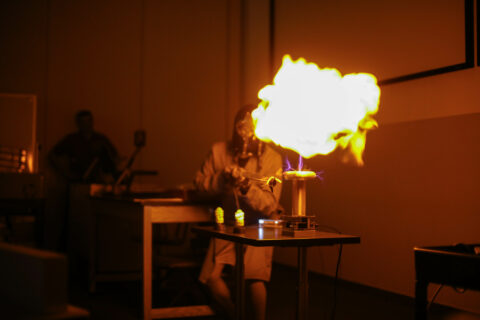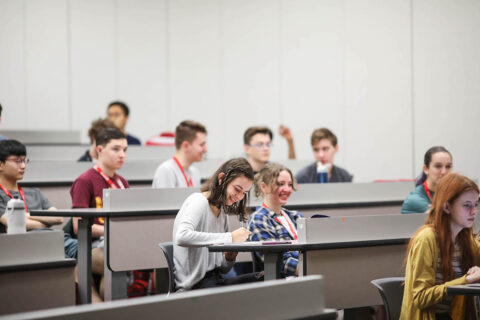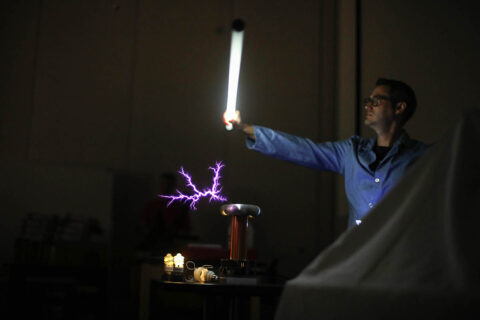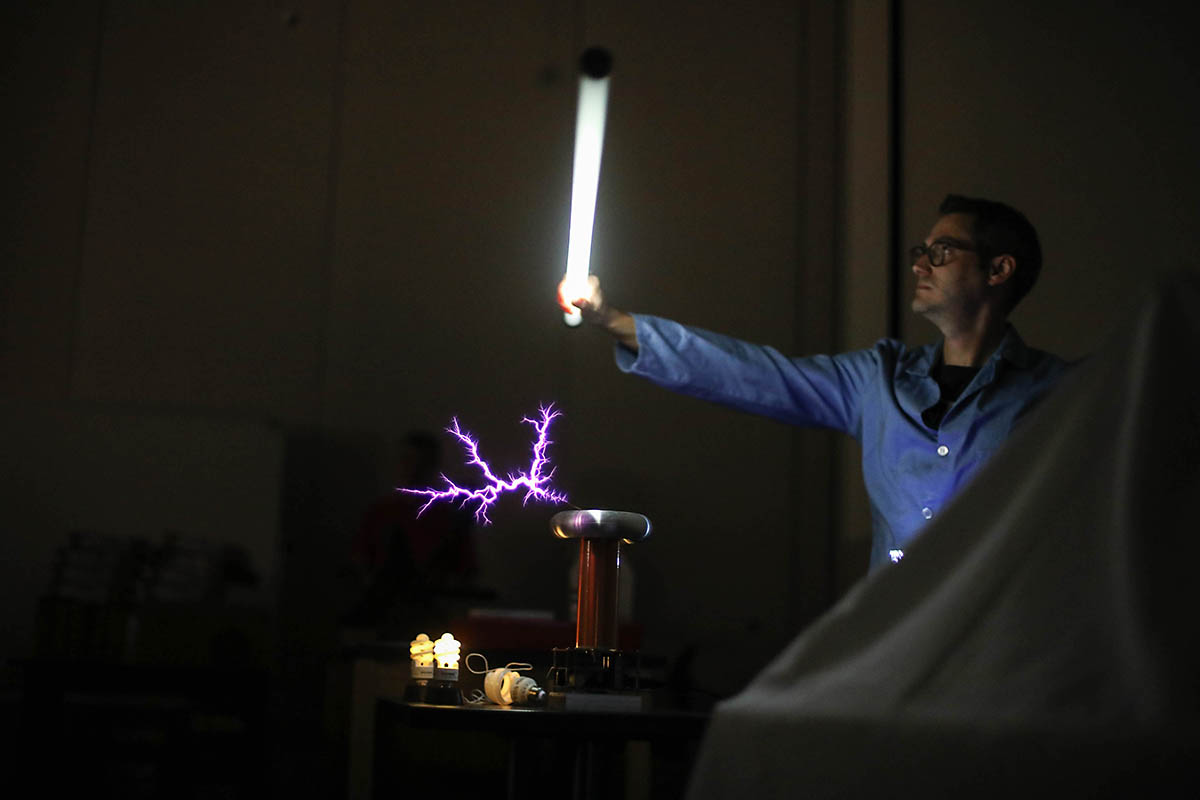 Clarksville, TN – The Governor’s School for Computational Physics returned for the 13th straight year to Austin Peay State University (APSU) this week, but this year brought something new – a sense of normalcy.
Clarksville, TN – The Governor’s School for Computational Physics returned for the 13th straight year to Austin Peay State University (APSU) this week, but this year brought something new – a sense of normalcy.

Last year’s Governor’s School was entirely online because of the COVID-19 Coronavirus pandemic. This year, the school’s students returned to campus.
Nearly 40 high-achieving high school juniors and seniors from across the state will live on campus for three weeks, enjoying a residential college experience while earning four college credit hours.
“Really the point of Governor’s School is the interaction,” said Dr. B. Alex King, chair of APSU’s Department of Physics, Engineering, and Astronomy, which hosts the school. “Governor’s School students are among the most motivated students at each of their high schools, and they probably haven’t had a chance to be in a room with 38 other like-minded students.
“It’s that interplay between the students that is interesting at Governor’s School,” he added. “We cover a tremendous amount of material because the students can pick things up quickly because they help each other.”

Not everything has returned to normal, though. Students normally make two field trips during Governor’s School – one to the National Space Science Technology Center in Huntsville, Alabama, and the other to the National Center for Computational Sciences at Oak Ridge National Laboratory.
Because the pandemic has disrupted those trips this year, several presenters from those centers will speak virtually to the students.
Austin Peay State University alumni Billy Teets, director of Vanderbilt University’s Dyer Observatory, and Dr. Adrian Parker, chief engineer of the U.S. Navy’s Missile Energy Systems Branch, also will speak to the students.
What is Governor’s School?
The Tennessee Department of Education offers 11 programs to juniors and seniors across the state. Topics cover science, the arts, business, technology, humanities, international studies and teaching.
The schools also introduce Tennessee’s high-achieving students to the value and resources the state’s public universities have to offer, King said.

The state provides scholarships to all the students to cover the costs of tuition, room, and board.
Austin Peay State University hosts the Governor’s School for Computational Physics, which is an introduction to computational problems in physics and engineering.
Dr. Daniel Mayo of the APSU Department of Mathematics and Statistics helps King teach the courses.
Current Austin Peay State University students and recent graduates help to mentor the Governor’s School students and lead extracurricular activities. This year’s mentors are:
- Philip Long, a recent physics graduate currently in the Master of Arts in Teaching program.
- Ken Shipley, a recent engineering physics graduate.
- Mackenzie Carr, a math major in actuarial science.
- April Torres, a physics major in astrophysics.
- Austin Harnage, a recent physics graduate attending the University of Tennessee, Knoxville, in medical physics this fall.
- Meleah Lanier, a physics major.
The school runs through June 25th.
Exploding hydrogen balloons
The first day of classes at Austin Peay State University’s governor’s school traditionally starts with a science demonstration by the APSU’s professional mad scientist, Bryan Gaither.
On Monday, he showed off his musical Tesla coil and a 15,000-volt neon sign transformer paired with a “Jacob’s Ladder.” He used the combo to detonate balloons filled with hydrogen – to booming effect.
Gaither also plans:
- To create a massive oobleck mixture from 500 pounds of corn starch.
- Use 24 pounds of thermite to melt through two airplane fuselages.
- Pit a trebuchet against an air cannon in an epic cornhole game.
Gaither also will help with lab work during the school.



